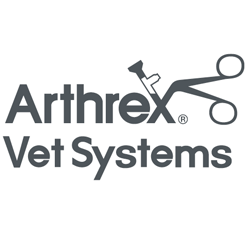Pharmacological Agents in the Treatment of Acute or Perioperative Pain
Pharmacologic Update
The pharmaceutical toolbox continues to grow and improve for companion animals. This section of the guidelines discusses notable pharmacologic changes and discusses persistent myths by drug class.
Although most opioids are in common use in veterinary species, they do not generally carry species-specific licenses in the United States. Simbadol is a recent exception. It is a buprenorphine formulation licensed for use in cats as an every-24-hour subcutaneous injection. 73,74 Recent studies also support its use in dogs,73–75 although it is not licensed for canine use. The 24-hour duration of action helps in providing pain relief to animals that are discharged into the home environment. A persistent myth surrounding opioid use in cats is the belief that they create excessive hyperactivity or dysphoria at clinical doses in cats. They do not, unless very high doses are administered. 76 A justified belief is that hyperthermia can be potentiated with opioids in cats, but this can be managed with monitoring and environmental modification.77
Newer drugs of the NSAID class include the expanded perioperative approval of robenacoxib in dogs and cats. Robenacoxib was initially released for 3 days of perioperative use in cats using oral tablets, and since 2015, the injectable solution is now also approved.78 Robenacoxib is now also licensed for perioperative use in dogs.79,80
Local anesthetic techniques have hit a new renaissance, with the promotion of their use in the dental college, increased availability of detailed descriptions of how to effectively use them,52,81 and the development of more advanced methods to ensure reliable placement, such as nerve-location devices and ultrasound.50,51 A newly available long-acting bupivacaine has added further momentum.82,83 The recently available long-acting preparation of bupivacaine is a liposome-encapsulated formulation, Nocita. When injected into the wound at the end of surgery, this agent can provide local analgesia that lasts up to 3 days. It is labeled for orthopedic surgery in dogs and onychectomy in cats. Opioids have been shown to have varying levels of independent sodium-channel blockage and to augment local blocks, with buprenorphine being a potent sodium-channel channel antagonist.84,85 Dexmedetomidine has also been shown to prolong local anesthetic blockade, likely from pharmacologic synergy as well as local vasoconstriction.86 Our knowledge of the efficacy of local anesthetic drugs other than lidocaine and bupivacaine has recently expanded. Ropivacaine is pharmacologically similar to bupivacaine but with an increased safety profile in humans, and it was recently shown to be similar in efficacy to bupivacaine.87 Recent data have also confirmed previous work88 demonstrating the efficacy of intraperitoneal local anesthetic instillation with or without local tissue infiltration.87,89–91
α2-Agonists have a variety of perioperative roles, including adrenergic-based analgesia, mitigation of vasodilation, reduced sympathetic outflow, and augmentation of sedation. Over the last 10 years, no new drugs in this class have emerged, but different uses and formulations of existing α2-agonists have. Intraoperative microinfusions are being used to provide additional analgesia and improve respiratory and hemodynamic function.92
Tramadol was once a reflexively used oral analgesic in dogs, but it has been seriously deemphasized in the last decade. Oral tramadol has not been shown to be effective postoperatively in dogs.93 Studies of IV tramadol have shown some mixed efficacy for surgical pain in dogs.94–96 Injectable tramadol has shown perioperative efficacy in the cat97; however, an IV form of tramadol is not available in the United States.
Gabapentin use has become widespread and common, although without supporting data, especially in chronic pain conditions (as described in the next section). It has not been shown to be effective for acute pain in dogs.98,99 The NK receptor system is bound by substance P and was studied for years as a possible target for analgesia. Although these studies failed, the NK receptor antagonists have been found to be excellent antiemetics. Maropitant has become very popular in veterinary medicine as an antiemetic but also to provide some visceral analgesia. Studies showing analgesia are limited and weak,100 but the antiemetic qualities of maropitant are well established.







